The Flat-Fee Advisor Revolution
Steven: So when you hire a financial advisor, you have two important decisions to make. First, what services is the advisor going to provide? And second, what’s it going to cost you? Today we’re going to talk about why we think that the comprehensive flat-fee is the best way for higher income and higher net worth people to pay their advisor. Stick around to the end when we show you how paying a financial advisor a flat-fee versus an asset-based fee, could potentially save you hundreds of thousands of dollars in fees, and net you over a million dollars more in additional assets. My name is Steve Boorstein. co-host of the Personal Finance CEO podcast. I’m here with my son Aiden, and we are also financial planners with Rock Crest Financial, a comprehensive financial planning firm in Somers Point, New Jersey.
Aiden: So, I want you to imagine hiring someone to water or fertilize your plants. Would you rather pay them a fee that’s based on the size of the plant, or would you rather pay them a fee based on the service that they’re providing to you? To a lot more people, it’s going to make more sense to pay them based on the service [00:01:00] itself and not the size of the plant.
That’s the difference between paying an advisor a fee based on the size of the account they’re managing versus paying a flat-fee for all advice you need in every area of your financial life.
So, for the past couple of decades, the asset-based fee (also called, Assets-Under-Management fee) has been the predominant way that most advisory firm charge clients. Usually, this is about a 1% fee taken right out of the account. So, if you have $1.5 million, you’re going to be paying your advisor $15,000 per year. If you have $2 million, you’re going to be paying your advisor $20,000 per year.
Steven: That sounds to me like a wealth tax. It’s like if your doctor charged you based off of how wealthy you are… it just doesn’t make a lot of sense.
Aiden: And some advisors call the 1% fee a flat-fee because it’s a 1 percent that never changes. That’s not really a flat-fee. That’s just a flat percentage. And a flat 1 percent fee still means that you never know ahead of time what you’re going to pay because that fee is based off how the markets move.
Now an advisor might be able to help better align your investments to your financial goals and certain challenges that you may be facing but in the end, they can’t control the markets. So why pay them a fee based on something that they can’t control?
Steven: Instead, what we’re talking about is a flat dollar fee. Our model is what we call Comprehensive Flat-Fee, which means, you know ahead of time, what you’re paying each month and each year for our services. And it doesn’t change based off of the markets.
Since 2022, RockCrest Financial has offered a flat-fee, comprehensive financial planning service in all five areas of personal finance.
That includes financial planning, which is the plan itself, as well as incorporating your goals and values. It includes tax planning and strategy… working with your accountant to help ensure you pay the least taxes over the long term. It includes estate planning and working with your attorney to help ensure all of your estate planning documents are correct, as well as things that don’t necessarily require your attorney, like making sure your beneficiaries are correct on your accounts and all your legal documents are in order.
It includes investment management over all your accounts, whether we manage those accounts directly. That includes your 401(k), investments at brokerage firms, banks, or wherever else your investments are. And then we also provide comprehensive risk management. We look at all of your insurances and work with your insurance agents, and with independent agents, to help make sure all of your insurances fit into your plan, that the premiums you are paying are reasonable and the you have the right coverages at all time.
Providing the flat-fee personal finance service in this way means that we have a fiduciary obligation to make sure your interests are put first at all times. And we have an obligation to provide that full range of services, which includes investments, but also much more than just managing your investments.
Unlike the commercial of one big advisory firm on TV where they say, “We do better when you do better…That sounds ridiculous to us.” We feel that’s like saying, “The more successful you are, the more we’ll charge you.” And that’s just not how we want to operate. We don’t charge you more when you do better.
Aiden: Our service is much more than just managing assets. It’s truly about being the CEO of your personal finances. Helping you plan in your pre-retirement years, throughout retirement, and helping you plan if you want to leave a legacy. So yes, we manage assets for clients, but that’s only about 20% of what we do. The other 80 percent is focused on all the other challenges, issues, goals that you have throughout your whole financial life.
Steven: So, let’s talk about two different kinds of fees, the asset management fee and the flat-fee. Let’s say Advisor #1 charges you 1% of your assets and it’s a $2 million portfolio.
Advisor #2 charges you a flat-fee of $15,000. And let’s just say due to cost-of-living increases, every five years they increase their price by 5%.
In year number one, the asset under management advisor/asset-based advisor charges you $20,000 to manage your portfolio and maybe provide some type of financial planning.
Advisor #2, under the comprehensive flat-fee, has charged you $15,000 to provide comprehensive flat-fee financial planning and investment management.
Now, let’s take a look at how this scenario would play out over the 30 years that you use these two advisors. As you can see in the beginning, there’s not a huge difference, but you can see how over time the cost difference between an asset-based advisor versus a flat-fee advisor can be very significant. And in this example, it results in over a million dollars in savings on an initial two million dollar portfolio over the course of 30 years.
Studies show that a blended portfolio about 60 percent stocks and 40 percent bonds over the past 30 years has averaged about 7.38%.
So that’s what we’re using in this example. And that means your advisor under the asset-based model gets a 7. 38 percent raise, on average each year for something that they really can’t control. And as you can see, the difference over time means that you’ve paid the asset-based advisor significantly more than the flat-fee advisor.
Under the asset-based fee model, by year 5, that portfolio has grown to $2.6 million, by year 10, $3.5 million and by year 30, $11.2 million.
But under the flat-fee model, paying a set fee each year, which has an inflation adjustment every five years, can have a significant impact on the same level of assets. For example, in this scenario, by year 5, the difference is about $50,000 more under the flat-fee model.
By year 10, the difference is about $163,000. And by year 30, it’s over $2.4 million in difference for that same 60/40 portfolio earning an average of 7. 38% just by using a flat-fee advisor versus an asset-based fee advisor.
So again, we would say paying an asset-based fee to an advisor where their income is based off how well the market grows over time. Is that really a fair way to pay the advisor? And does that really reflect the services that their providing to you? We believe that this comprehensive flat-fee model removes almost all conflicts of interest that we can think of and fulfills the advisor’s fiduciary responsibility to the client.
Aiden: Think about it. What’s the exact dollar amount you’re going to be paying your advisor this month? Not sure. That’s our point. How about each of the services that you’re guaranteed from your advisor? How many non-investment related financial meetings do you have with your advisor? Also, does your advisor talk to you about your tax strategy, your investment strategy, your estate planning strategy, and insurances?
Is your advisor talking to your other financial professionals, your mortgage agent, your accountant, and your banker? There’s a list of different financial professionals that your advisor should be talking to in order to create the most comprehensive financial plan.
Steven: It’s like you’re the Chairman of the Board of your financial life and your financial planner is the Personal Finance CEO who’s making sure that the team of financial professionals you have… everyone from your accountant to your attorney, to your mortgage guy, your banker, to your insurance agents are all working together , communicating, coordinating, simplifying your life and are all held accountable for their part in your financial success.
Another big difference is that under the comprehensive flat-fee model, you can keep your money wherever you want. We have no financial incentive to have you transfer it from one institution to another. Certainly, it’s often much easier for us to manage if it’s at an institution that we deal with, but if it’s at your 401k, your bank or any other company… we’ll help you manage the assets wherever they are. And, the cost is no more or no less to the client, no matter where the assets are held.
As long as we’re able to help direct how those investments get managed so that we can make sure that they fit into the overall financial plan… That’s the most important part.
Under the current asset-based model advisors have an incentive to get you to “rollover” and transfer assets to them, because they only get paid on the assets that they manage for you. And we think that it’s a conflict of interest.
To us, the comprehensive financial planning flat-fee makes much more sense. The client’s cost is related to the comprehensive set of services we provide and not the client’s portfolio value.
Aiden: If this makes sense to you, and you’re tired of not knowing exactly what you’re paying, contact us to learn more about our truly comprehensive flat-fee financial planning service.

